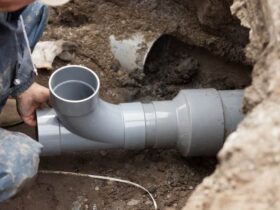If you need to change air (ventilate) in large rooms (workshops, trading halls, hotels), then ventilation systems are arranged in them. The same systems are used for heating these buildings in the cold season.
The ventilation system consists of an air duct, an air heating device and, of course, a fan. In such systems, the centrifugal “snail” fan is mainly used, depending on the size of the room.
The principle of work
In a steel case, which has the shape of a snail, a wheel rotates (a hollow drum with blades around the perimeter), driven by an electric motor. In this case, the wheel makes the air and the air inside the wheel. There is a centrifugal force, which forces this air to move to the perimeter and is squeezed into a pipe located on the case.
Differences between centrifugal fans
The main differences in devices of this type are their performance, and this is a fairly wide range, from 300 m3/h, to 18,000 m3/h. Further, individual models can differ in the permissible maximum temperature of the moving air. For most, the maximum temperature is 600C, while some models are designed to work at 800C.
The centrifugal “Snail” fan can also vary by the method of connecting to the electric motor. There are three constructive solutions here:
The first design is when the rotating drum is rigidly planted on the shaft of the electric motor;
The second type of connection is when the drum is strengthened by its own shaft. The shaft, through the bearings, is strengthened on a special bed, and with an electric motor is connected by a special coupling;
In the third case, the drum is also on its own shaft, but it is connected with the electric motor using a cuneiform transmission. The last design of the unit allows you to change the frequency of rotation of the drum (by changing pulleys), with the same electric motor.
Also, the differences in the devices relate to their operating conditions. For simple ventilation of general -purpose premises (hotels, shops, stations), fans are manufactured in a case made of ordinary carbon steel, according to TU 29.2-25185354-001-002, and, of course, require compliance with certain operating standards. That is, the pumped air should not contain large and sticky inclusions, as well as aggressive fumes.
But if air replacement is required in chemical laboratories, or workshops of a chemical enterprise, where exhaust ventilation is required using production technology, then fans made of stainless steel are used.
The requirement for fans for aggressive media
Where the air may contain vapors of acids and explosive substances, additional requirements are presented to the fans, such as corrosion resistance and explosion safety. In exceptional cases, for such cases, all the main details of the device are made of plastic.
Article prepared based on the materials of the site: Plant Teplomash













Оставить коммент.